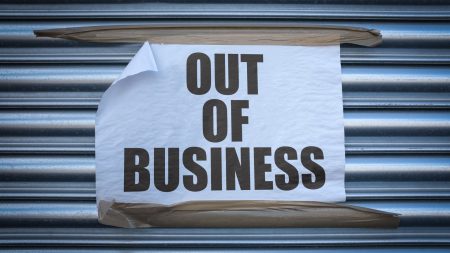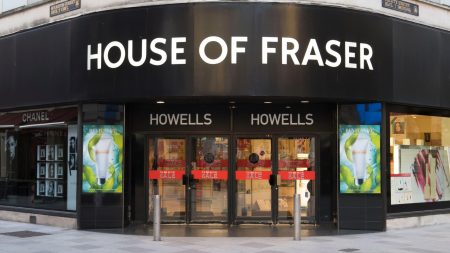The UK high street is bracing for another wave of closures as five major retail chains prepare to shutter stores this weekend, adding to the growing number of vacant storefronts across the country. This latest round of closures reflects the persistent challenges facing brick-and-mortar retailers, including rising operational costs, declining foot traffic, and evolving consumer shopping habits, increasingly favoring online platforms. The closures will leave dozens of workers unemployed and deprive communities of familiar shopping destinations, further underscoring the fragility of the high street landscape. Experts predict a bleak outlook for the retail sector in 2025, with thousands more closures and job losses anticipated.
The closures this weekend encompass a variety of retailers, including sportswear giant Nike, stationery and book retailer WHSmith, fashion retailer New Look, clothing brand FatFace, and toy store The Entertainer. Nike’s closure of its Edinburgh factory outlet store will result in the loss of approximately 30 jobs, while WHSmith’s ongoing downsizing strategy will see the closure of its March, Cambridgeshire branch, among others. New Look’s departure from Wickford, Essex, follows years of struggle against high street headwinds, and FatFace’s Sheffield store closure marks another loss for the city’s retail scene. The Entertainer’s closure in Luton adds to the town’s recent retail woes, following the closure of WHSmith and a Post Office branch earlier this month.
These closures represent a continuation of a troubling trend that saw approximately 13,479 high street stores close in 2024. The Centre for Retail Research (CRR) forecasts a further 17,350 store closures in 2025, driven by increased national insurance contributions and a rise in the national minimum wage, both of which will significantly impact retailers’ operating costs. These increased costs, coupled with cautious consumer spending amid a cost-of-living crisis, are forcing retailers to make difficult decisions, including store closures, job cuts, and price increases.
The retail sector is grappling with a confluence of challenges. The shift to online shopping, accelerated by the pandemic, has dramatically reduced foot traffic in physical stores, while rising energy costs and inflationary pressures have squeezed profit margins. The upcoming increases in national insurance contributions and the minimum wage will further exacerbate these challenges, potentially leading to more widespread closures and job losses. The CRR estimates that as many as 202,000 retail jobs could be lost in 2025, surpassing the job losses seen during the height of the pandemic.
The impact of these closures extends beyond the immediate loss of jobs and shopping options. The decline of the high street can have a detrimental effect on local communities, leading to decreased economic activity, reduced social interaction, and a decline in the overall vibrancy of town centers. While some retailers are attempting to adapt by investing in new store formats and online strategies, many are struggling to keep pace with the rapidly changing retail environment.
The future of the high street remains uncertain. While some experts believe that the high street can be revitalized through innovative approaches and a focus on experiential retail, others predict a continued decline. The ongoing challenges facing retailers, combined with changing consumer behavior and economic uncertainty, suggest that the high street is likely to undergo further transformation in the years to come. The closures this weekend serve as a stark reminder of the pressures facing the retail sector and the need for both retailers and policymakers to explore solutions to ensure the long-term viability of the high street.











